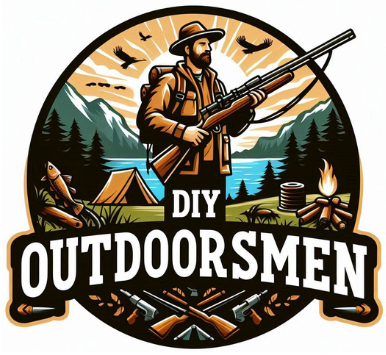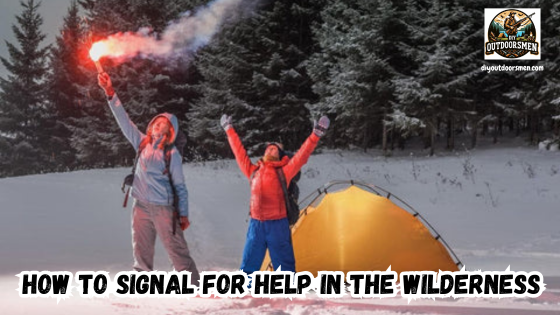Contents
- 1 Understanding the Importance of Wilderness Signaling
- 2 The Three-For-Anything Approach
- 3 Creating Visible Ground Signals
- 4 Other Effective Signaling Methods
- 5 Planning and Preparation Before Heading Into the Wilderness
- 6 Additional Tips for Effective Wilderness Signaling
- 7 Advanced Considerations for Wilderness Emergencies
- 8 Frequently Asked Questions
- 9 Final Thoughts on Wilderness Signaling
I have spent a considerable amount of time in the wilderness, and I understand the value of being prepared for emergencies. Signaling for help when you are far from civilization is both a skill and a priority. I want to share what I have learned about using the universal distress signal rule and other methods that can step up your chances of being found.
QUICK LOOK: Signaling for Help in the Wilderness
- Planning & Preparation: My experience has taught me that proper preparation involves knowing both conventional and creative methods of signaling for help.
- The Rule of 3: The international emergency distress signal is based on the number three. The rule is simple: three of any kind of signal can alert others that you are in trouble.
- Ground Signals: In many situations, search parties from the air scan vast landscapes. Creating large symbols on the ground can make a huge difference. Ground signals should be clear and simple so they are easily recognizable from above.
- Bright Colors: wearing or placing bright clothing in nearby areas. Bright items provide high contrast with the natural earth tones of wilderness settings. Carrying an extra piece of vividly colored fabric can serve as an additional marker on the landscape.
- Smoke Signals: smoke signals offer a dual benefit. By building a fire and adding green vegetation, you create a thick, visible plume behind the flames. This combination is particularly useful during the day when the sun makes the smoke stand out and at night when the fire draws attention.
- Personal Locator Beacon (PLB): Another device that has become essential in modern wilderness safety is the Personal Locator Beacon (PLB). I view the PLB as a critical backup in the field because it sends out an emergency signal to your location.
- Flashlights Flares & Whistles: A flashlight can make intermittent light sequences that mimic the three-signal rule. Similarly, a whistle not only supports the primary distress signal but also supplements other methods. Signal flares have been used for decades as emergency signals to draw attention.
- Satellite Phone: with the development of Starlink and other satellite phone services, they can be a lifesaver if you need help in the wilderness.
Understanding the Importance of Wilderness Signaling
When you are in a remote area, safety often depends on your ability to call for assistance quickly and clearly. Being lost or injured means you should have a plan to attract the attention of rescuers. I believe that planning ahead makes a significant difference in handling unexpected situations. A well-thought-out signaling strategy can save you valuable time and may even mean the difference between life and death.
My experience has taught me that proper preparation involves knowing both conventional and creative methods of signaling for help. Whether you are an experienced outdoor enthusiast or a beginner just starting out, having a clear plan gives you the confidence to handle any crisis that might arise. In the wilderness, every minute counts, and a clear signal can lead rescuers to your location quickly and efficiently.
The Three-For-Anything Approach
The international emergency distress signal is based on the number three. I have always kept this guideline in mind while planning my outdoor adventures. The rule is simple: three of any kind of signal can alert others that you are in trouble. This approach is founded on clear repetition, making it easily recognizable from afar.
This method is effective because these repeated signals are universally understood by experts in search and rescue operations. I always make sure to include one or more of these three-part signals in my emergency kit. Among the available methods, here are the most reliable:
- Three Whistle Blasts: A small whistle is light and easy to carry, and a series of three quick blasts can cut through the quiet of the wilderness. Every time I head out, I pack a durable whistle as part of my basic gear.
- Three Fires: Setting up three fires in a triangle formation can be very effective. Fires create significant smoke during the day and visible flames at night. I advise ensuring you have enough dry wood and a simple way to start a fire so you can safely set up these signals.
- Three Shots: If you have access to a firearm and are trained in its use, firing three quick, controlled shots makes a clear statement. I caution that this method should only be used if you are proficient and it is safe to do so.
- Three Mirror Flashes: Reflecting sunlight with a small mirror can produce intense flashes visible from long distances. Even in environments where sound might be lost in ambient noise, light signals breakthrough. I have often carried a signal mirror on sunny days when the chance of reflection is optimal.
Creating Visible Ground Signals
In many situations, search parties from the air scan vast landscapes. I have learned that creating large symbols on the ground can make a huge difference. Ground signals should be clear and simple so they are easily recognizable from above.
A common tactic is to create a large X or the word HELP using materials found in nature. Rocks, branches, or other natural elements can be used for this purpose. When I am in areas with few man-made structures, I consider which parts of the natural environment can serve as a canvas for a visible sign.
In addition to static signals, adding directional arrows can indicate movement. For example, if you need to signal that you are heading in a certain direction, a large arrow drawn on the ground can guide rescue teams searching from an expected path.
Other Effective Signaling Methods
Beyond the classic three indicators and ground signals, several other methods can help you stand out in the wilderness. I always ensure my kit includes multiple tools so I can adjust my signals to match the situation.
One effective method is wearing or placing bright clothing in nearby areas. Bright items provide high contrast with the natural earth tones of wilderness settings. Carrying an extra piece of vividly colored fabric can serve as an additional marker on the landscape.
Similarly, smoke signals offer a dual benefit. By building a fire and adding green vegetation, you create a thick, visible plume behind the flames. This combination is particularly useful during the day when the sun makes the smoke stand out and at night when the fire draws attention.
Another device that has become essential in modern wilderness safety is the Personal Locator Beacon (PLB). I view the PLB as a critical backup in the field because it sends out an emergency signal to your location. Although these devices sometimes require a subscription or licensing in certain regions, they are small, portable, and provide peace of mind.
Additional signaling can be achieved with tools such as flashlights and whistles. A flashlight can make intermittent light sequences that mimic the three-signal rule. Similarly, a whistle not only supports the primary distress signal but also supplements other methods.
Planning and Preparation Before Heading Into the Wilderness
Before I set out on any remote trip, preparation is part of my routine. I make sure I have all the necessary items that might be needed during an emergency. It helps to think ahead and pack more than you might initially assume.
One of the first items I pack is a reliable whistle. As mentioned earlier, the whistle is invaluable for emitting a clear sound that carries over distances. I also pack extra batteries and fuel for electronic devices such as a PLB or flashlight.
I also study the natural conditions of my destination; terrain, vegetation, and weather patterns can all influence which signaling methods work best. For example, in areas with dense foliage, ground signals might be blocked, making alternatives like mirror flashes more useful. Knowing the environment helps decide which tools will serve best in any given scenario.
Carrying a small kit specifically for signaling can smooth the way during emergencies. My kit typically includes a whistle, signal mirror, extra fuel for fires, items to create ground signals, and a small amount of bright fabric or flagging tape—all kept in an easily accessible spot in my pack.
Additional Tips for Effective Wilderness Signaling
Over time, I have gathered extra techniques that improve signaling effectiveness. Keeping these tips in mind during an emergency can maximize your chance of rescue.
It is crucial to ensure that every signal is as clear as possible. When using reflective tools like a signal mirror, I always aim it so that sunlight increases the chance of reflection. Similarly, when setting up fires for smoke signals, I choose materials that produce thick, white smoke rather than grey smoke that might blend with the surroundings.
Positioning is also very important in signaling. For ground signals, I choose open areas free of dense trees or other obstructions. I try to create the largest possible signal so that the shape or word is unmistakable from a distance. Using contrasting materials is key; for instance, in rocky terrain, placing green vegetation nearby creates noticeable contrast.
If I have access to a PLB, I activate it as soon as I face distress. Modern PLBs use satellite communication to send precise location data. While no electronic device is entirely foolproof, a PLB gives rescuers a reliable clue about where to look.
Recording details of your location can also help. I often use a map and compass to note my coordinates, and if I use a GPS device, I ensure it is fully charged and safely stored. Knowing your position can make it easier for emergency responders to locate you if visual signals are missed.
Advanced Considerations for Wilderness Emergencies
Once you have mastered the basics, consider additional advanced strategies for signaling for help. I have found that these extra measures can really boost your overall survival plan.
One advanced technique is creating redundancy in your signaling plan. This means not relying solely on one method but using multiple devices at the same time. If one signal fails or is less visible due to environmental factors, others have a chance to catch attention. I always mix sound, light, and ground signals to cover all bases.
Another factor to consider is the time of day, as signal visibility can change with lighting conditions. On a bright afternoon, smoke signals might be more effective, whereas, at night, a flashlight or the glow of a fire stands out. I assess the conditions and adjust my methods accordingly. For instance, if I am out in the evening, I reinforce the ground signal with extra lighting.
Weather can also switch up the effectiveness of your signals. I have noticed that in heavy rain, my whistle might be drowned out by the elements, or ground signals may become obscured. In these cases, backup electronic signals like a PLB and a strobe light tend to work better. This adaptability is vital when immediate changes occur in the environment.
Practice is important when it comes to signaling for help. I spend time on non-critical days to simulate emergency scenarios. This practice boosts my confidence and familiarity with the equipment. Regular drills ensure that the response becomes nearly instinctive when needed.
Frequently Asked Questions
This section answers questions I often encounter about wilderness signaling and my personal experience with these techniques.

Why is the number three repeated in distress signals?
Using three in-distress signals provides a clear, simple, and universal code recognized internationally. There is little room for confusion when rescuers see or hear a repeated pattern of three signals.
Are personal locator beacons worth the investment?
In my experience, PLBs are a useful addition to any wilderness kit. Although they come at an extra cost, the reliability and precision they offer make them a very important investment for anyone who spends significant time in remote areas.
What should I do if my primary signaling tools fail?
I recommend carrying multiple forms of signaling devices. If one method fails or isn’t visible, another can be used. Combining sound, light, and ground signals greatly increases the chances of being noticed.
How can I ensure that my ground signals are visible?
The key is to use materials that contrast well with the environment. I advise creating large symbols or words such as an X or HELP using rocks, logs, or branches. The more prominent the signal, the more likely rescuers are to notice it from the air.
Is it useful to practice setting up these signals?
I find that regular practice improves both readiness and confidence. Running through each signal setup under varied conditions ensures you know what to do when an emergency arises.
Final Thoughts on Wilderness Signaling
As someone who values outdoor experiences, I have learned that the ability to signal for help is something every adventurer should take very seriously. The three-for-anything approach, combined with ground signals and extra methods, creates a reliable framework for emergencies. I always strive to be prepared with a full kit that includes a whistle, signal mirror, materials for fires, and bright markers.
Wilderness emergencies are unpredictable and can occur during a moment of distraction or a sudden change in weather. I review my signaling methods before each trip to ensure I am ready if help is needed.
The tips shared here are based on my own experiences and observations. I recommend taking the time to practice using these tools in safe conditions and experimenting with different signaling mediums.
Understanding your surroundings helps determine which methods will work best. Recording your location using maps, landmarks, or GPS coordinates adds another layer of security and speeds up rescue operations.
Staying safe in the wilderness depends on being adaptable and resourceful. I keep my knowledge current by reading reliable sources and following the latest rescue protocols. Investing time in learning and practicing these methods is one of the best decisions I have made for all my outdoor adventures.
When you combine simple signals like three whistle blasts or mirror flashes with larger ground markers and advanced equipment like PLBs, you create a multi-layered system that can save lives.
I encourage everyone to prepare, plan ahead, and practice these techniques. This commitment offers peace of mind in the vast and unpredictable outdoors, ensuring that help is always on its way.
Check Out Our Latest Articles:
- How To Plan A Solo DIY Elk Hunting Adventure In The Mountains
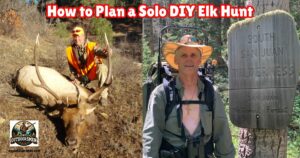
- How To Track Wild Hogs DIY Tips And Techniques

- Bow Vs. Crossbow Hunting: What You Need To Know

- Understanding Deer Behavior To Improve Your Hunt

- Complete Guide On Tracking Game Animals
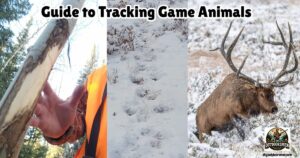
- DIY 4-Step Guide To Field Dressing And Quartering A Deer
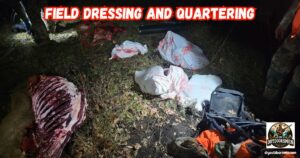
As always, stay safe, enjoy the journey and please try to leave it cleaner than you found it. If you have any comments, questions, ideas, or suggestions please leave them in the comment section below and I’ll get back to you ASAP. You can follow us on YouTube: Man Art Creations for videos of our DIY Adventures.
P.S. – Thanks so much for checking out our blog we really appreciate it. Just so you know, we may receive a commission if you click on some of the links that appear on our site. This helps us keep our content free and up-to-date for everyone. We appreciate your support!
